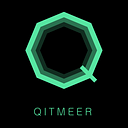Understanding Cryptocurrency Token Standards: From ERC Protocols to Wrapped Tokens

Despite the existence of tens of thousands of cryptocurrencies, you might be surprised to learn that most are built on the same blueprint. These blueprints are called token standards, defining key functionalities and attributes of blockchain tokens. Common blockchain protocol standards include ERC-20, ERC-721, and ERC-1155.
Why Use Token Standards?
Interoperability
Token standards ensure that all products built using the same standard can interact or collaborate. For instance, ERC-20 assets can seamlessly interact with other products and services developed using the same standard. This simplifies exchanging ERC-20 tokens for other tokens without needing specific wallets for each token.
Composability
In programming, composability allows developers to reuse existing components to create new products. By using token standards, developers spend less time on basic functionalities, allowing more time for experimentation and innovation.
Efficiency
Token standards also facilitate interactions between smart contracts, enabling them to monitor and manage tokens that comply with the standard. For example, the ERC-20 standard provides functionalities like address retrieval and token balances, enhancing the efficiency of smart contract operations.
Common Token Standards
ERC-20
The ERC-20 standard was proposed by Ethereum developer Fabian Vogelsteller in 2015. ERC stands for “Ethereum Request for Comments”, and 20 is the proposal number. This standard defines a common interface for fungible tokens, enabling developers to create interoperable tokens.
ERC-20 is a token standard used to develop assets that follow universal rules and are interchangeable. Thus, each ERC-20 token created shares the same functionalities. BEP-20 is similar to ERC-20 but is used on the Binance Smart Chain (BSC), whereas ERC-20 is for the Ethereum blockchain.
- The main features of the ERC-20 standard include:
ERC-721
The ERC-721 standard was proposed in 2018 by Dieter Shirley and William Entriken, aiming to define non-fungible tokens (NFTs).
Unlike fungible tokens, ERC-721 tokens must have globally unique token IDs, making each token unique and non-interchangeable. This standard catalyzed the rise of the NFT market, with CryptoKitties being one of the first projects using the ERC-721 standard.
ERC-1155
With the evolution of token standards, the ERC-1155 standard emerged in 2019, proposed by Enjin’s Witek Radomski.
ERC-1155 is a multi-token standard allowing simultaneous management of both fungible and non-fungible tokens, widely used in the gaming and virtual asset sectors, particularly for dynamic NFTs.
QNG Network Compatibility with Ethereum Protocols
The QNG Network, the latest evolution of Qitmeer Network, is compatible with mainstream token standards, smart contracts, and decentralized application (DApp) development.
This significantly enhances ecosystem interoperability and scalability, enabling developers to seamlessly migrate Ethereum applications to the QNG Network.
Limitations of Token Standards
While tokens created using the same standard are consistent in basic functionalities, tokens using different standards may not be compatible.
This means tokens developed with different standards might not communicate or trade on the same platform. To address this issue, the industry has introduced the concept of wrapped tokens.
Wrapped Tokens
Wrapped tokens are cryptocurrencies pegged to the value of another asset. Typically, the original asset is held in a digital vault called a wrapper, while its wrapped version is created on another blockchain, akin to an incarnation.
What is WMEER?
When using decentralized exchanges (DEXs) on the Qitmeer Network, if you receive WMEER, don’t be puzzled. WMEER (Wrapped MEER) is a wrapped version of the Qitmeer Network’s native cryptocurrency MEER, generated in a one-to-one ratio.
Due to MEER’s partial compliance with the ERC-20 standard, there are limitations when using MEER on platforms like IceCreamSwap and other DeFi platforms. WMEER, as an ERC-20 token, aims to resolve these compatibility issues, enabling greater circulation of MEER.
Conclusion
Token standards provide a unified blueprint for designing and deploying blockchain tokens, enabling seamless interoperability within diverse ecosystems.
Despite some compatibility issues between standards, the application of token standards will further drive the adoption of blockchain technology and cryptocurrencies as technology continues to evolve and improve, providing more opportunities and convenience for users and developers alike.
➡️ Content source: https://qitmeer.io/blogs/233
